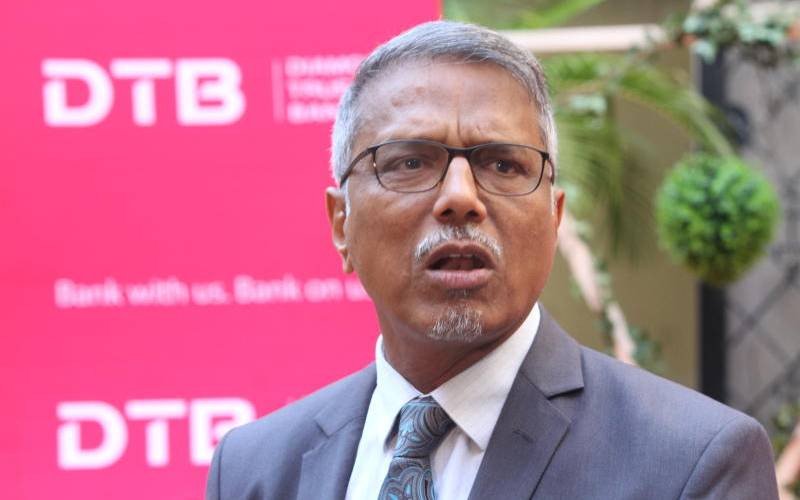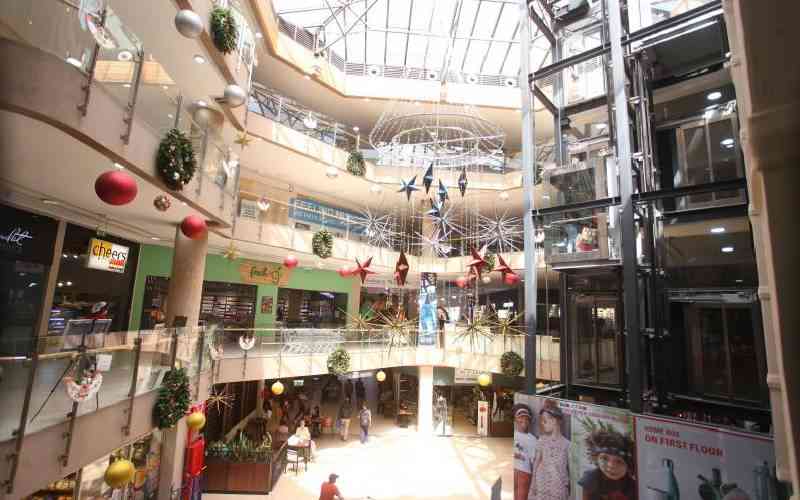
Sylvan Mghanga holds the artifact of the oldest wooden helm of a ship while he leans forward to peer inside a gigantic aquarium with pictures of a shipwreck and floating fish.
He rolls the helm, a steering wheel of a ship, backwards with the skill of a seasoned captain, taking his passengers back to the 15th century’s history of marine life and shipping business at the Kenyan coast.
The helm metaphorically represents leadership or control, and the one inside the Maritime Museum gives visitors a sneak peek into the country's dominance in East Africa’s marine sector over the centuries.
The centrepiece of the museum is the Mtepe, a traditional dhow constructed entirely from hardwood and sewn together using rope made from coconut husk fibres. It is showcased in a sunken display area that simulates a water environment, providing visitors with a realistic maritime atmosphere.
The exhibit includes old tools used by coastal communities for boatbuilding, some of which date back to the 15th century, alongside detailed interpretation of their materials, usage, and cultural significance.
Navigational aids, a display on ports and harbours, traditional sea crafts used in maritime trade operating along the East African Coast before and after the 15th century, such as the Dau la Pate, sambuk and ngalawa, and a panoramic view of the Port of Mombasa in 1972 are also on display.
“In a country where terrestrial and inland stories have often dominated historical discourse, the museum rebalances the narrative, acknowledging the sea as a fundamental element of Kenyan identity, history and future prospects,” said Andrew Mwangura, who hailed the museum as a special place.
Mwangura, former Seafarers Union of Kenya (SUK) Secretary General and a veteran mariner, said that the maritime museum represents far more than a new tourist attraction.
''It marks a pivotal moment in the nation's recognition of its maritime identity and heritage – a long-overdue credit of the sea's profound influence on Kenya's past, present and future,'' he said.

Kenya’s maritime history stretches back millennia, with sophisticated maritime activities dating to at least 500 BC, according to the National Museums of Kenya (NKM).
However, the Kenya Ports Authority (KPA) came up with the idea to establish the museum at a maritime building built between 1913 and 1915 and proposed it in 1984 and again in 1992.
The idea gained formal momentum in 2008, and the building was gazetted on April 29, 2009, vide Gazette notice number 5025, as a historical monument.
A deal was signed between the Kenya Ports Authority (KPA) and the National Museums of Kenya (NMK) in February 2010 to retain the brickwork and façade as a historical monument.
“The initiative aimed to create a space dedicated to the preservation of marine artefacts and memorabilia unique to KPA’s history for the benefit of future generations,” stated KPA in the deal.
KPA adds that the museum features a thematic storyline that guides visitors from the entrance through a tunnel simulating the experience of crossing the Likoni channel.
Stay informed. Subscribe to our newsletter
Other displays include information on the evolution of port management in East Africa, as well as modern sea vessels. The experience is enhanced through interactive elements such as touchscreens, pictorial displays, and documentary screenings.
KPA officials said that a minimal entry fee has been proposed, subject to approval, to help maintain the facility and support public programming and that it will open to the public.
It would serve KPA staff, schools and colleges, researchers, East African citizens, and tourists arriving on cruise ships. It is, however, awaiting the installation of modern KPA models and commissioning.

The Maritime Museum is located within the Port of Mombasa, near berth number 1 and adjacent to the Marine Watch Tower. The museum occupies approximately 800 square metres. It includes exhibit areas, a souvenir shop, offices, and an artifact storage area.
''The new museum will provide a space to showcase indigenous innovations like the Mtepe vessels – engineering marvels that could transport up to 40 tonnes of cargo using coconut fibre cord rather than nails. By preserving these technological achievements, Kenya reclaims a narrative of innovation that predates colonial contact,' said Mwangura.
He said the museum stands poised to document the 600-kilometre coastline's ancient landing sites and natural harbours that supported thriving maritime communities before modern ports came into being.
"Archaeological evidence from sites like Manda, Shanga and Gedi will find proper context within an institution dedicated to maritime heritage," he said.
Mwangura, at the same time, sought to explain that the timing of setting up the museum is crucial as traditional shipbuilding knowledge faces extinction.
The Maritime Museum project was supervised by the National Museums of Kenya (NMK) under a memorandum of understanding signed in 2010.
In a statement, KPA said that the role of NMK is consultancy, including developing a conservation and rehabilitation plan, designing and producing the exhibition, training and supporting the project and overall supervision of all works in collaboration with the KPA Engineering department.
It is expected that the museum will meet the objectives of preserving marine artefacts and memorabilia unique to the port and the sea coast for future posterity, form part of the circuit of activities for the cruise tourists as an added attraction and serve historical and research purposes.
The building where the museum is located, according to KPA, was originally used to store ivory. It is believed to have been the first office of Kenya Cargo Handling Services (KCHS), the predecessor of KPA.
"The building site is endowed with archaeological, historical, environmental, aesthetic, and economic value," added KPA.







